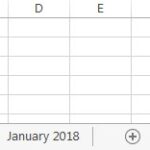The .30-30 Winchester is a classic lever-action cartridge, deeply rooted in American hunting tradition. But how does it stack up against other popular rounds, specifically the .35 Remington? This article delves into a head-to-head comparison of these two legendary deer woods contenders, examining their history, ballistics, and practical applications to answer the question: What Is A 30-30 Comparable To?
For generations, lever-action rifles chambered in .30-30 Winchester and .35 Remington have dominated deer hunting. Both cartridges offer effective terminal performance at short ranges, making them well-suited for dense forests and brushy terrain. This comparison aims to settle the longstanding debate, drawing on decades of hunting experience and ballistic data.
The Tale of Two Cartridges: History and Development
The .30-30 Winchester, also known as the .30 WCF, holds a unique distinction as the first commercially available smokeless powder sporting cartridge. Introduced in 1895 for the Winchester Model 1894, it quickly gained popularity as a versatile hunting round. Its name derives from its .30 caliber bullet propelled by 30 grains of smokeless powder.
The .35 Remington, a rimless cartridge, followed in 1906, designed for the Remington Model 8 autoloading rifle. Though initially part of a four-cartridge series, the .35 Remington emerged as the sole survivor, becoming a favorite among hunters using lever-action rifles like the Marlin 336.
Ballistic Breakdown: Comparing Performance
Both the .30-30 and .35 Remington excel at moderate ranges typical of deer hunting scenarios. Traditionally, both relied on round-nose bullets due to the tubular magazines of lever-action rifles.
The .30-30 Winchester typically fires 150- to 170-grain bullets at velocities around 2,200-2,400 fps. The .35 Remington, with its larger diameter, uses heavier 180- to 200-grain bullets at slightly lower velocities, around 2,000-2,100 fps.
While muzzle energies are comparable, around 1,800-1,900 ft-lbs, advancements like Hornady’s LeveRevolution ammunition provide flatter trajectories for both cartridges by utilizing spitzer bullets with polymer tips. This levels the playing field, enhancing long-range performance. However, even with modern ammunition, practical hunting ranges remain similar for both.
The .35 Remington, with its wider bullet diameter, boasts a larger frontal area, potentially creating more extensive tissue damage. Conversely, the .30-30 Winchester often exhibits higher sectional density, contributing to deeper penetration.
The Verdict: Which Cartridge Reigns Supreme?
While performance is nearly identical in the field, ammunition availability tips the scales in favor of the .30-30 Winchester. The .30-30 enjoys widespread popularity, ensuring a broader selection of readily available factory loads. This factor alone solidifies its position as the enduring choice for lever-gun enthusiasts.
The .35 Remington remains a viable option, particularly for hunters with existing rifles and ample ammunition stockpiles. However, for those entering the lever-action world or seeking a readily available and versatile round, the .30-30 Winchester stands as the clear winner. Its extensive ammunition options, combined with its proven track record, make it a timeless classic and the answer to the question, “What is a 30-30 comparable to?” The answer, ultimately, is itself, with few true rivals in its class.

